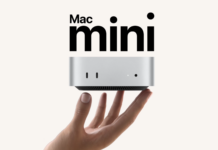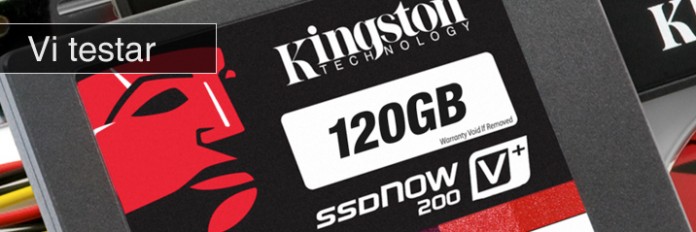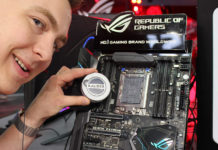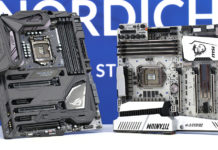Intel Skulltrail is the meanest, baddest piece of hardware available today. Two Intel Core 2 Extreme processors and four GPUs, either ATI or NVIDIA, it just doesn’t get much better than this, or does it?
Intel Skulltrail. Just listen to it. Now, this is a teaser, and we’ll start by teasing you a bit. Just taste the word Skulltrail. It sounds so hostile, in a good way. It’s something meant to totally wipe out everything in its way, including the good ‘ol Quad FX platform from AMD not to mention the Skulltrail predecessor, the V8 Media Creation Platform.
Some might say that a dual quad-core system is totally unnecessary as most applications yet are to go multi-threaded. But we still can’t stop admiring those who pushes the limits and try their hardest to come up with something that even might be sickeningly expensive as long as it’s a good concept. We’re here to show you what it’s all about.
The Skulltrail motherboard is dubbed D5400XS, and one thing is for sure; the suffix XS does not stand for "Extra Small" as it’s an EATX solution, which is a standard for server/workstation use. Sadly, it has to be said, that Intel has carried over more than just the form factor from their server solutions department, namely the RAM type. As Skulltrail is based on the 5400 "Seaburg" chipset, which is usually found in servers, and the fact that Intel has yet to switch to integrated memory controllers to the CPU, you are required to use DDR2 FB-DIMM. That’s FB for Fully Buffered, and probably even "Fiercely Bad-ass", at least when it comes to pricing. Two 1GB sticks of PC6400 FB-DIMM will set you back about $120, which isn’t that bad really, but it’s way more expensive than standard DDR2 sticks, not to mention the overclocking capabilities, which are usually below crappy.
So much for the bad things. Or at least this far. Surely there must be something good about a $600 motherboard? It ships in a black, quite ordinary box, which doesn’t exactly do much to think you’ve just spent a two weeks pay on the contents besides the fact that is says "extreme" pretty much everywhere. And do not underestimate that Intel sends you a huge $40 worth of freebie in the form of Ghost Recon 2!
 |
 |
 |
When you actually open the box, you are greeted by a bunch of accessories, the normal stuff like IDE cable, SATA cables (eight of them, actually), a bunch of information flyers, a DVD containing a full manual, drivers and so on, a sticker telling you what all the jumpers and I/O connectors do, I/O shield, the longest SLI bridge you’ll ever encounter (you could probably SLI between two separate computers, that’s how long it is), and to prove that it hasn’t lost its humor, Intel ships a special "hardware kit". Also, there’s a paper sheet to fit in your case to show you where the standoffs are supposed to be and a bracket to fit your 40mm fan of choice on the northbridge cooler.
 |
 |
 |
That’s about enough talk about the accessories, don’t you think? Let’s check the real goodies out on the next page.
The D5400XS is a big motherboard, as expected from an EATX standard board. We’re here to find out if it has any really interesting features, or at least look-wise. To begin with, here’s a shot of the motherboard in it’s entirety. The foremost thing that excels is the two LGA771 sockets of course, but also that there’s a diagnostic panel showing error codes in the right lower corner of the board, four PCI-E x16 slots, not to mention that huge black thing that cools the south bridge.
 |
 |
As for I/O connectivity, there are two eSATA ports, six USB ports, one IEEE1394 port, one LAN port and 7.1 sound, not much else. There would obviously have been space enough for a few more USB ports or even a LAN port (considering it’s a server chipset and therefore should be a server motherboard in essence). But don’t forget this is marketed as a desktop board, and mainly for extreme users, and many of these boards won’t probably ever even be connected to a network.
 |
 |
As you might expect from something has four PCI-E x16 slots, there are no x1 slots around, as you simply can use the x16 slots instead. The best thing about the slots is that they’re not electrically limited in any way, they’re all running on x16 bandwidth, which equals a total of 64 PCI-E bus lanes on this motherboard, an impressive feat. Sadly though, they’re all following the PCI-E 1.1 standard. That isn’t a problem really, but it’s a bit sad as it’s supposed to be the best that Intel has to offer, and the price is set thereafter. Now, let’s just skip this whole price-worthiness crap and let’s go and see what makes this board every hardcore geeks dream. Next page, that is.
Now for what you’ve all been waiting for, or at least a tour of what this board is. Below, you’ll find two images showing off both sockets, and what you’ll notice is that they’re separated by the northbridge cooler (which is the same as on the X38 Bonetrail motherboard). Intel has been using solid capacitors for the CPU voltage regulators, and there are five of the regulators. The MOSFETs have been covered up by sturdy aluminum heatsinks and should fare pretty well. Also, between the CPUs, above the northbridge cooler, we have the 8-pin +12V-connectors, two of them, as there are two CPUs. Both of them are required to run the system, which judging by what we’ve seen so far might be a pretty power-consuming one.
 |
 |
 |
Oh, and remember that black “southbridge cooler”? We removed it for you. Now, to be honest we weren’t exactly blown away by what it is, essentially a bit of aluminum, although a pretty big one. Oh, almost forgot; it has one of them fancy fans as well. Hopefully, not a loud one.
 |
 |
Now, you saw there were three thermal patches. You might be wondering what’s beneath it, and here’s the answer; the southbridge, naturally, and two nVidia PCI-E bridge chips to enable SLI on the D5400XS board (in reality they just split the PCIe lanes, but we didn’t tell you that). Hidden beneath the aluminum next to the south bridge is also the ICS932S421BGLF clock generator, this might help to know if you’re looking for software to overclock your CPU.
 |
 |
 |
That’s about it for the motherboard walkthrough, we guess. But there’s still an aspect we haven’t touched that much this far, namely the CPUs. They’ll be present on the next page.
The Skulltrail is best used to showcase Intel’s performance by slapping on the most expensive high-end CPUs there are, which in this case would be the QX9770. But there’s a problem; that’s not possible, as the QX9770 is for Socket 775, and the D5400XS is Socket 771. So what Intel has done is basically take a Xeon CPU, taken the best there is from the wafer and unlocked it. On a side-note we can tell you that Intel doesn’t screen for high leakage processors, up the TDP and just think we go with it, but the QX9775’s along with Intel’s ULV processors are from the middle of the wafer, being the absolutely best. This should make for either cool CPU’s or as we want in this case; extreme overclocking. Anyways, here are the processors in all their glory.
 |
 |
Of course we also wanted to compare the QX9775 to a standard Socket 775 CPU, so to the rescue comes a E6320 covered in thermal paste. As you see, the processor is angled 90 degrees as compared to the S775 layout. The QX9775 we mean.
 |
 |
To end this CPU madness, we’ve chosen to show you the back sides of the CPUs to show what differences there are, with the electrical components being the foremost. The QX9775 is to the left, E6320 to the right.
 |
We feel this ended up being a pretty thorough walkthrough on the Skulltrail platform, and hopefully you won’t feel dissatisfied. It’s time to sum up our initial thoughts on the D5400XS, the Core 2 Extreme QX9775 processors and the bundled hardware kit.
Being even able to take these pictures and actually touching the board feels quite big to a simple reviewer, let alone in Sweden where there’s not too many of these platforms circulating. We will for sure be doing our best to push these systems and we will in the future present you a review or more with the Skulltrail platform as basis, to show you what the platform actually is capable of. Until then we guess you’ll just have to be content, and we promise to what we can to show you the overclocking capabilities of the D5400XS and the QX9775’s.
 |
The motherboard and the bundle feel pretty solid, with everything necessary in place, with nothing elaborate. It’s clear Intel wants you to focus on the motherboard itself and not anything else. It’s a purpose-built motherboard for overclocking and far from your normal server motherboard, even though it’s based on server technology, with the most reminiscent part being the FB-DIMM RAM required. Apart from that, we’re looking forward to a overclocking-fest and an experience not to forget; the day Intel stepped into extreme extreme-end hardware.






















